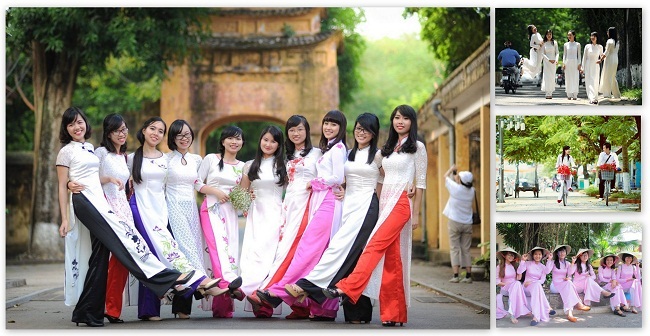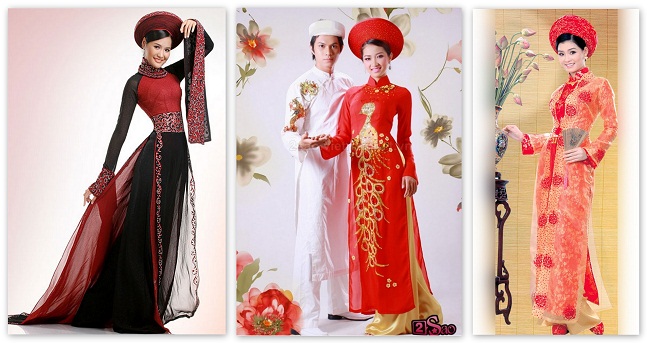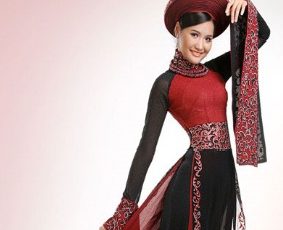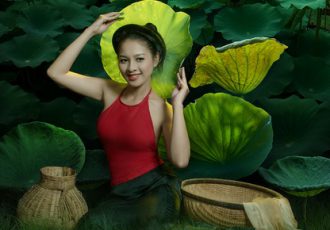Traditional Vietnamese dress "ao dai"
The importance of the traditional dress “Ao Dai” in the life of Vietnamese women
More than a dress in the literal sense of the word, the traditional dress "Ao Dai", literally " long dress " in French, has become an aesthetic standard of women's clothing and a Vietnamese symbol . It is certainly the most remarkable combination of tradition and modernity.
Due to its elegance and grace, the "ao dai" has become inseparable from the image of Vietnamese women , both within Vietnam and beyond its national borders. It is particularly present during official ceremonies, conferences, and weddings.
In everyday life, it is also a popular uniform for Vietnamese high school and college girls, although it is not worn frequently. Flight attendants also wear this dress as a national emblem. Finally, the "ao dai" highlights the beauty and charm of hotel and restaurant receptionists... constantly arousing admiration.

What is Ao Dai?
Compared to other Vietnamese women's dresses, the ao dai is the simplest in style. It consists of a silk dress that is tight-fitting at the bust, reaches mid-leg, and is slit on both sides up to the pelvis, and pants. This Vietnamese dress has long sleeves and a tight neckline. It fastens discreetly on the side with small buttons. The pants are usually white or the same color as the dress, with a loose fit. They are held in place by an elastic waistband sewn into the top.
A bit of history
The "ao dai" also has a long history that would be enriching to learn about. Indeed, its origins date back to the 17th century, when the Nguyen lords and their subjects settled in the center of the country, in contact with the very rich Cham culture. The traditional four-part dresses of Viet women then incorporated the first exotic features of Cham clothing, to the point of becoming "longer."

The origin of the Ao Dai, the liberation of Vietnamese women
While there is still debate today about who created the ao dai in its current form, it is generally accepted that the ao dai was born out of a genuine need among a certain category of Vietnamese women of that time. Their intention was to resist the somewhat restrictive Confucian dress traditions in favor of greater individual freedom.
This need also received favorable support expressed by certain innovative groups through the press. In addition, painters from the Indochina School of Fine Arts made a significant contribution: they reduced traditional robes to two panels instead of four or five panels. The new model was also shorter, reaching just below the knees. The tunic was replaced by lighter trousers that hugged the legs more tightly and covered down to the ankles.
However, before being adopted as a common women's costume, the new ao dai overcame quite a few challenges. In its early days, only Vietnamese women married to French men wore it . Little by little, the renovated ao dai attracted women and girls from other social backgrounds from the 1940s to 1945.
The revised Ao Dai would generate a veritable "revolution" of ideas, gaining momentum towards the beginning of the 20th century, affecting multiple areas of Vietnamese social life.
Today's ao dai
Nowadays, the ao dai has become so common that there are very different versions for every age group. Not only girls, but also middle-aged and even elderly women have their own models with very specific colors.
Mature women prefer dark colors and thicker fabrics. High school girls, for example, prefer white ao dai, a color symbolic of purity and virginity .
Despite the competition from new Vietnamese clothing styles , the ao dai has found a solid place in the lives of Vietnamese people. The image of the ao dai even goes beyond the country's borders. It follows the footsteps of Vietnamese people in foreign countries and represents a symbol of Vietnam. In international beauty pageants, a representative must wear the ao dai during her fashion show. For fashion designers, the ao dai is always a new inspiration, such as the collections of Giorgio Armani, Ralph Lauren, Calvin Klein. It is a undoubtedly unique model that crosses the boundaries of time and space .
In 1995, the Vietnamese Ao dai was honored to receive the “best traditional costume ” award at the International Beauty Contest.

The Vietnamese Ao Dai is not just about aesthetics. It is also a cultural, historical, and traditional ambassador. It is the “national soul” of Vietnamese women . For contemporary artists and fashion designers alike, the ao dai is an endless source of inspiration!
If you have the opportunity to take a trip to Vietnam from north to south, you can get the best tailor-made "ao dai" clothing in Hoi An in central Vietnam.






